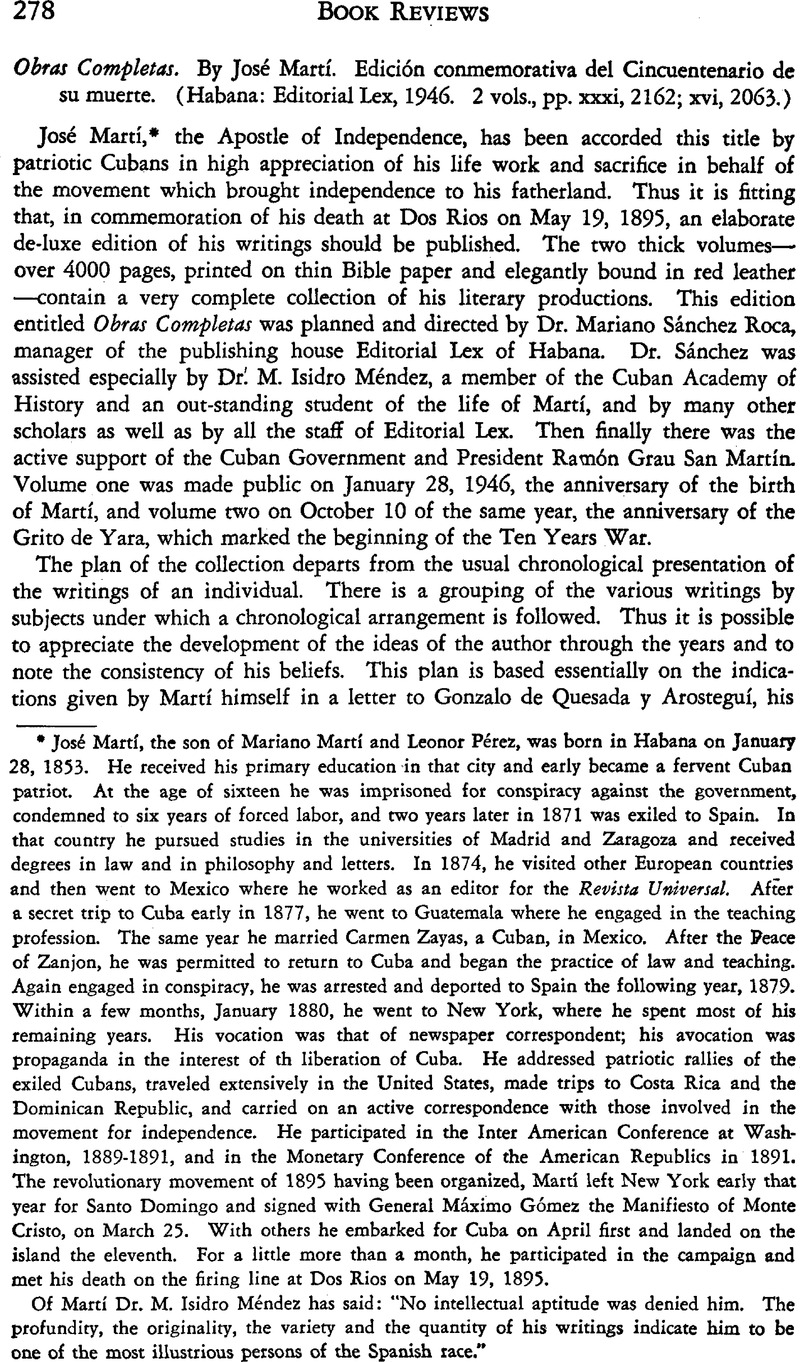No CrossRef data available.
Article contents
Obras Completas. By José Martí. Edición conmemorativa del Cincuentenario de su muerte. (Habana: Editorial Lex, 1946. 2 vols., pp. xxxi, 2162; xvi, 2063.)
Published online by Cambridge University Press: 11 December 2015
Abstract

- Type
- Book Reviews
- Information
- Copyright
- Copyright © Academy of American Franciscan History 1948
References
* José Martí, the son of Mariano Marti and Leonor Pérez, was born in Habana on January 28, 1853. He received his primary education in that city and early became a fervent Cuban patriot. At the age of sixteen he was imprisoned for conspiracy against the government, condemned to six years of forced labor, and two years later in 1871 was exiled to Spain. In that country he pursued studies in the universities of Madrid and Zaragoza and received degrees in law and in philosophy and letters. In 1874, he visited other European countries and then went to Mexico where he worked as an editor for the Revista Universal. After a secret trip to Cuba early in 1877, he went to Guatemala where he engaged in the teaching profession. The same year he married Carmen Zayas, a Cuban, in Mexico. After the Peace of Zanjon, he was permitted to return to Cuba and began the practice of law and teaching. Again engaged in conspiracy, he was arrested and deported to Spain the following year, 1879. Within a few months, January 1880, he went to New York, where he spent most of his remaining years. His vocation was that of newspaper correspondent; his avocation was propaganda in the interest of th liberation of Cuba. He addressed patriotic rallies of the exiled Cubans, traveled extensively in the United States, made trips to Costa Rica and the Dominican Republic, and carried on an active correspondence with those involved in the movement for independence. He participated in the Inter American Conference at Washington, 1889–1891, and in the Monetary Conference of the American Republics in 1891. The revolutionary movement of 1895 having been organized, Marti left New York early that year for Santo Domingo and signed with General Máximo Gómez the Manifiesto of Monte Cristo, on March 25. With others he embarked for Cuba on April first and landed on the island the eleventh. For a little more than a month, he participated in the campaign and met his death on the firing line at Dos Rios on May 19, 1895.
Of Marti Dr. M. Isidro Méndez has said: “No intellectual aptitude was denied him. The profundity, the originality, the variety and the quantity of his writings indicate him to be one of the most illustrious persons of the Spanish race.”




